Upcycling Old Dishes: Mosaic Art Tutorial
Are you tired of looking at those old, chipped dishes cluttering up your cabinets? Instead of tossing them into the trash, why not transform them into stunning mosaic art? Upcycling is not just a trend; it's a fantastic way to breathe new life into items that have lost their original purpose. In this tutorial, we'll guide you through the creative process of turning your discarded ceramics into beautiful, one-of-a-kind pieces that can brighten up your home or garden.
Mosaic art is an ancient craft that has stood the test of time, and with today's modern twist, you can create something truly unique. Imagine taking those once-beloved plates and cups, breaking them into colorful pieces, and reassembling them into a breathtaking design. It's like a puzzle, but instead of a picture, you’re creating a work of art that tells a story. Whether it's a vibrant garden table or a decorative wall hanging, the possibilities are endless!
Throughout this article, we will explore various techniques, materials, and tips to help you on your upcycling journey. We'll start by discussing how to choose the right dishes for your project, ensuring that you select pieces that not only look good but also fit your artistic vision. Then, we’ll dive into the essential tools and materials you’ll need to gather before you start crafting. From adhesives to safety gear, we’ll cover everything to ensure a smooth crafting experience.
But that's not all! We will also discuss the crucial aspects of designing your mosaic, including color theory to create harmony in your artwork and tips for creating a template to streamline the process. Plus, we’ll share practical advice on cutting and shaping your dishes, ensuring that you achieve those stunning patterns you envision. So, grab those old dishes and let’s get started on this exciting journey of creativity!
Understanding which types of dishes work best for mosaic art is essential. You want to look for ceramic pieces that are not only visually appealing but also durable enough to withstand the crafting process. Plates, bowls, and cups made of stoneware or porcelain are excellent choices due to their sturdiness and vibrant glazes. Avoid fragile items like thin glass or overly ornate pieces that may break too easily.
When selecting your dishes, consider the following:
- Color: Brightly colored or patterned dishes can add a lively touch to your mosaic.
- Texture: Different textures can create interesting visual effects in your final piece.
- Size: A variety of sizes allows for more creative designs and layouts.
Remember, the goal is to create a cohesive and visually appealing mosaic, so choose pieces that complement each other. The more diverse your selection, the more dynamic your artwork will be!
Before diving into your mosaic project, it’s crucial to gather all the necessary tools and materials. Having everything at hand will make your crafting experience much smoother and more enjoyable. Here’s a rundown of what you’ll need:
- Safety Gear: Safety goggles and gloves to protect your eyes and hands while cutting.
- Adhesives: A strong ceramic adhesive or epoxy to hold your pieces together.
- Grout: To fill the gaps between your mosaic pieces once they are set.
- Cutting Tools: A mosaic cutter or hammer for breaking dishes into smaller pieces.
- Work Surface: A sturdy table or board to work on.
Once you have your tools and materials ready, you’ll be well-equipped to start your mosaic masterpiece. In the next sections, we’ll explore the different types of adhesives and their applications, ensuring that your artwork stands the test of time.
Selecting the right adhesive is crucial for the durability of your mosaic. Various types of adhesives serve different purposes, and understanding these can help you make an informed choice. Here’s a quick overview:
| Type of Adhesive | Best Use |
|---|---|
| White Craft Glue | Indoor projects, lightweight pieces |
| Epoxy | Heavy-duty bonding, outdoor projects |
| Silicone Adhesive | Flexible bonding, moisture-prone areas |
Choosing the right adhesive will ensure that your mosaic remains intact and beautiful for years to come. In the following sections, we’ll delve deeper into waterproof vs. non-waterproof adhesives and tips for application.
Understanding the difference between waterproof and non-waterproof adhesives is vital, especially if you plan to display your mosaic art outdoors. Waterproof adhesives are ideal for outdoor projects as they resist moisture and temperature changes, while non-waterproof adhesives are better suited for indoor displays. Consider where your artwork will be displayed before making a choice.
Applying adhesive correctly can significantly impact the final look of your mosaic. Here are some practical tips:
- Use a thin, even layer of adhesive to prevent excess from seeping out between pieces.
- Press each piece firmly into place and allow it to set before moving on to the next.
- Take your time! Rushing can lead to misalignment and uneven surfaces.
With these tips in mind, you’re ready to create a stunning mosaic that showcases your creativity and resourcefulness. Next, we’ll explore how to cut and shape your dishes to achieve those perfect mosaic patterns.
Creating a cohesive design is essential for a successful mosaic. Before you start placing your pieces, take some time to brainstorm ideas and layout patterns that will enhance the visual appeal of your artwork. Think about themes, colors, and shapes that resonate with you.
Understanding color theory can elevate your mosaic design. Choosing colors that complement each other can create harmony and balance in your artwork. Consider using a color wheel to help you select a palette that evokes the emotions you want to convey. For instance, warm colors like reds and yellows can create a vibrant and energetic feel, while cool colors like blues and greens can evoke calmness and serenity.
A well-planned template can simplify the mosaic process. Sketching your design on paper before transferring it to your working surface can help you visualize the final product. Once you have a clear idea, you can start placing your pieces according to your template, ensuring precise placement for a polished look.
Q: Can I use any type of dish for my mosaic project?
A: While you can technically use any dish, it's best to choose ceramic pieces that are durable and visually appealing, like stoneware or porcelain.
Q: Do I need special tools to cut the dishes?
A: Yes, using a mosaic cutter or hammer is recommended for safely breaking and shaping the dishes.
Q: How do I make my mosaic waterproof?
A: Use waterproof adhesive and grout to ensure your mosaic can withstand outdoor conditions.
Q: What if I make a mistake during the process?
A: Don't worry! You can always remove pieces and reapply adhesive if needed. Just be patient and take your time.
Now that you have all the information you need, it's time to roll up your sleeves and start creating! Upcycling old dishes into mosaic art is not just a fun project; it's a way to express your creativity while giving new life to items that would otherwise be discarded.

Choosing the Right Dishes
When it comes to creating stunning mosaic art, the first step is to choose the right dishes. You might be wondering, "What makes a dish suitable for a mosaic?" Well, the answer lies in a few key factors: material, color, and texture. Not all dishes are created equal, and selecting the right ones can make a world of difference in your final masterpiece.
Start by looking for ceramic or porcelain dishes. These materials are not only durable but also provide a beautiful surface for your mosaic. Avoid glass or plastic dishes, as they can be challenging to cut and may not hold the adhesive well. When browsing through your kitchen or thrift store, keep an eye out for plates, bowls, and cups that have interesting patterns or vibrant colors. Remember, the more unique the piece, the more character it can add to your mosaic!
Another important aspect to consider is the size and shape of the dishes. Smaller pieces can be easier to work with and allow for more intricate designs. Think about how you want your final piece to look. Are you aiming for a large focal point or a subtle background? This decision will guide your dish selection. Additionally, don't shy away from mixing different shapes and sizes to create a more dynamic composition.
As you gather your dishes, keep in mind the texture of the surfaces. A variety of textures can add depth to your artwork. For instance, a smooth plate can contrast beautifully with a rough, textured bowl. Combining different textures will not only make your mosaic visually appealing but also engaging to touch. So, go ahead and explore your options!
Once you've selected your dishes, it’s also a good idea to consider their color palette. Think about the overall vibe you want to convey with your mosaic. Are you going for a bright and cheerful look, or something more subdued and earthy? You can even create a color scheme by grouping dishes that share similar hues. This will help you establish a cohesive design that draws the eye and creates harmony within your artwork.
In summary, choosing the right dishes for your mosaic art is all about being intentional and creative. Look for ceramic pieces that are visually appealing, consider their size and shape, and pay attention to texture and color. By carefully selecting your materials, you can set the foundation for a stunning mosaic that truly reflects your artistic vision.
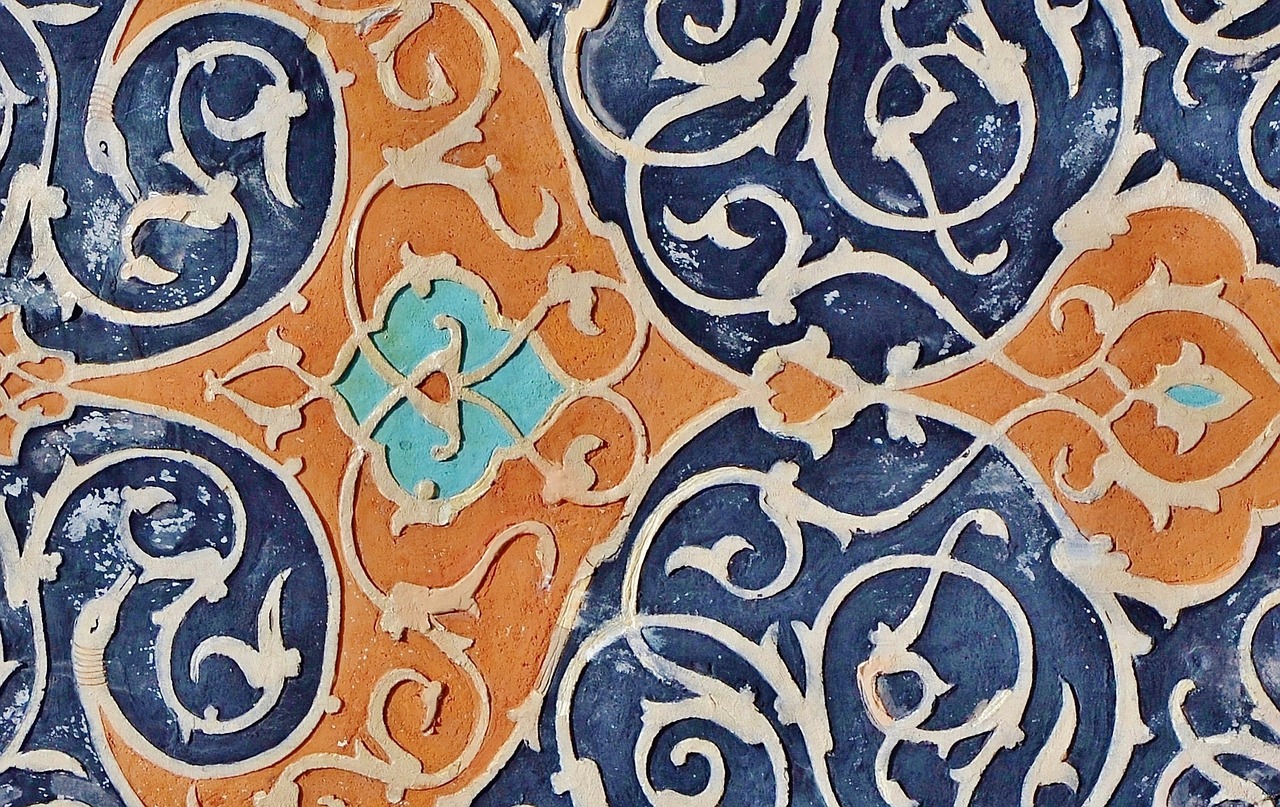
Essential Tools and Materials
Before diving into the exciting world of mosaic art, it's crucial to gather all the you'll need for your project. Think of this as setting up your artist's palette, where each item plays a vital role in bringing your creative vision to life. The right tools not only make the crafting process smoother but also ensure that your final piece is durable and visually stunning.
First off, you'll need a good pair of gloves to protect your hands. Working with broken ceramics can be sharp and potentially hazardous, so safety should always come first. Alongside gloves, a pair of goggles is a must. They shield your eyes from flying shards when you're cutting or breaking the dishes. Imagine trying to create your masterpiece while wincing in pain—definitely not the ideal scenario!
Next on the list is a reliable adhesive. The type of adhesive you choose will depend on whether your mosaic will be displayed indoors or outdoors. For outdoor pieces, a waterproof adhesive is essential to withstand the elements. In contrast, for indoor art, a non-waterproof adhesive might suffice. To make your decision easier, here’s a quick comparison:
| Adhesive Type | Best For | Durability |
|---|---|---|
| Waterproof Adhesive | Outdoor mosaics | High |
| Non-Waterproof Adhesive | Indoor mosaics | Moderate |
In addition to adhesive, you'll need a tile cutter or a hammer and a hard surface for breaking your dishes. If you're using a hammer, make sure to cover the dish with a cloth to contain any flying pieces. It's like wrapping a present, but instead, you're revealing the beautiful mosaic pieces hidden inside. A cutting mat can also be helpful to protect your work surface and keep things tidy.
Don’t forget about your grout! This material fills the gaps between your mosaic pieces, giving it a finished look. Choose a color that complements your tiles for a cohesive design. Applying grout can be a bit messy, so having a sponge and a bucket of water on hand for cleanup is a smart move.
Finally, having a good workspace is essential. A sturdy table with ample lighting will make your crafting experience much more enjoyable. Think of it as your own little art studio where creativity flows freely. By organizing your tools and materials, you’ll set the stage for a successful mosaic project!
In summary, gathering the right tools and materials is the foundation of your mosaic art journey. From protective gear to adhesives and cutting tools, each component plays its part in transforming your old dishes into a stunning piece of art. So, gather your supplies and get ready to unleash your creativity!
- What types of dishes are best for mosaic art? Look for ceramic dishes with interesting patterns or colors. Avoid thin glass as it can shatter easily.
- Can I use other materials besides dishes? Absolutely! You can incorporate glass, stones, or even tiles to enhance your mosaic.
- How do I clean my mosaic once it's finished? Use a damp cloth to wipe it down. Avoid harsh chemicals that might damage the grout or adhesive.
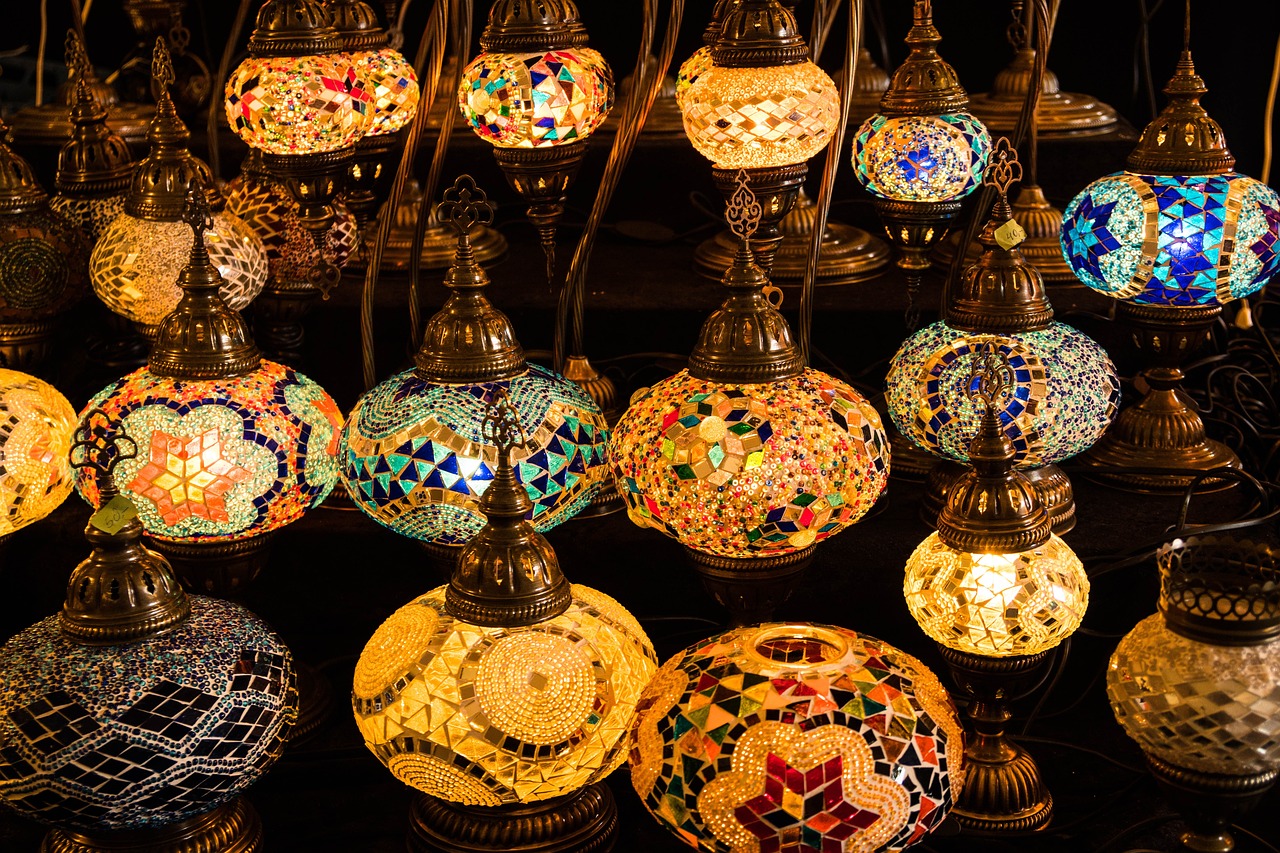
Types of Adhesives
When it comes to creating stunning mosaic art from old dishes, the type of adhesive you choose is absolutely crucial. The right adhesive not only ensures that your pieces stay securely in place but also affects the overall durability and longevity of your artwork. There are several types of adhesives available, each with its own unique properties and best-use scenarios. Let’s dive into the most popular options to help you make an informed decision.
Ceramic and Tile Adhesive is a go-to choice for many mosaic artists. This adhesive is specifically designed to bond ceramic materials and provides a strong, lasting hold. If you’re working with heavier pieces or plan to display your mosaic outdoors, this type of adhesive is particularly effective due to its resistance to moisture and temperature fluctuations.
Another option is Epoxy Adhesive, which consists of a resin and a hardener. Once mixed, it forms an incredibly strong bond that can withstand significant weight and stress. Epoxy is perfect for intricate designs where you need the pieces to stay put, but it can be a bit tricky to work with. Make sure to follow the instructions carefully and wear gloves, as it can be quite sticky!
If you’re looking for something more versatile, Craft Glue might be your best bet. This type of adhesive is easy to use and dries clear, making it ideal for smaller projects or indoor displays. However, keep in mind that craft glue may not hold up well in humid conditions or outdoor settings, so reserve it for pieces that will be kept inside.
Finally, there’s Silicone Adhesive. This is another fantastic option for outdoor mosaics, as it is waterproof and flexible once cured. Silicone adhesive is particularly useful when working with irregularly shaped pieces, as it can fill gaps and create a seamless look. However, it’s essential to note that it may take longer to set compared to other adhesives.
To help you visualize the differences, here’s a quick comparison table:
| Type of Adhesive | Best For | Durability | Indoor/Outdoor |
|---|---|---|---|
| Ceramic and Tile Adhesive | Heavy pieces | High | Both |
| Epoxy Adhesive | Intricate designs | Very High | Both |
| Craft Glue | Small projects | Medium | Indoor |
| Silicone Adhesive | Irregular shapes | High | Outdoor |
Choosing the right adhesive for your mosaic project is a bit like picking the right paint for a masterpiece. It can make all the difference between a stunning work of art that lasts a lifetime and a project that falls apart at the seams. So, take your time, consider the environment where your mosaic will be displayed, and select an adhesive that fits your needs. Happy crafting!
- What is the best adhesive for outdoor mosaics? Ceramic and tile adhesive or silicone adhesive are excellent choices for outdoor projects due to their durability and moisture resistance.
- Can I use regular glue for mosaics? While you can use craft glue for smaller, indoor projects, it may not hold up well in humid conditions or outdoor settings.
- How do I apply adhesive to my mosaic pieces? Use a small brush or a spatula to apply a thin, even layer of adhesive to the back of each piece for optimal adhesion.

Waterproof vs. Non-Waterproof
When diving into the world of mosaic art, one of the most crucial decisions you'll make is choosing the right adhesive. This choice can significantly impact the longevity and appearance of your masterpiece. So, let's break down the differences between waterproof and non-waterproof adhesives, shall we?
Waterproof adhesives are specifically designed to withstand moisture and are ideal for projects intended for outdoor use or areas prone to humidity, like bathrooms or kitchens. Think of them as the raincoats for your mosaic—protecting your art from the elements and ensuring it remains intact regardless of weather conditions. These adhesives create a strong bond that resists water damage, which is essential if your mosaic will be displayed outside or in wet environments.
On the flip side, we have non-waterproof adhesives. These are perfectly fine for indoor projects where exposure to moisture is minimal. They tend to be easier to work with and dry faster, making them a popular choice for beginners or quick projects. However, if you choose to use these adhesives for outdoor projects, you risk your beautiful mosaic falling apart or fading over time due to the elements. It’s like going out in the rain without an umbrella—sure, you might get lucky, but chances are you’ll end up soaked!
| Feature | Waterproof Adhesives | Non-Waterproof Adhesives |
|---|---|---|
| Durability | High | Moderate |
| Best Use | Outdoor projects, high moisture areas | Indoor projects |
| Drying Time | Varies (usually longer) | Faster |
| Cost | Generally higher | Generally lower |
Ultimately, the choice between waterproof and non-waterproof adhesives boils down to where you plan to display your mosaic. If it's going to be gracing your garden or hanging on a porch, opt for waterproof options to keep it safe from the elements. However, if it’s a lovely piece for your living room or a cozy nook, non-waterproof adhesives will do just fine. Just remember, making the right choice at this stage will save you from potential heartbreak down the road!
- Can I use non-waterproof adhesive for outdoor mosaics? It's not recommended, as it may deteriorate over time due to exposure to rain and moisture.
- How do I know if an adhesive is waterproof? Check the product label or description; most waterproof adhesives will clearly state their moisture resistance.
- Can I seal non-waterproof mosaics for added protection? While sealing can provide some level of protection, it’s not a substitute for using a waterproof adhesive.

Tips for Application
When it comes to applying adhesive for your mosaic art, there are a few essential tips that can make a world of difference. First and foremost, ensure that your working surface is clean and free of dust or grease. This simple step can greatly enhance the bond between the adhesive and your ceramic pieces. Imagine trying to build a house on a shaky foundation; the same principle applies here!
Next, consider the type of adhesive you're using. Some adhesives are thicker than others, which can affect how easily they spread. A good rule of thumb is to use a notched trowel for larger pieces, as it helps create even ridges of adhesive, allowing for better coverage and a stronger hold. For smaller tiles or intricate designs, a simple craft stick or a brush can be more effective. This way, you can precisely apply adhesive where it’s needed without making a mess.
Another crucial aspect is the timing of your application. Adhesives can have a limited working time before they start to set, so it’s best to work in small sections. This approach not only prevents the adhesive from drying out but also allows you to adjust your pieces as needed. Think of it like a dance; if you try to rush through it, you might step on your own toes!
As you place each piece, apply a little pressure to ensure it adheres well, but be careful not to apply too much force, as this could lead to breakage. It’s all about finding that sweet spot! And speaking of pressure, it’s a good idea to use spacers between tiles if you want to maintain consistent gaps for grout later on.
Once your pieces are in place, give them some time to set before moving on to the next steps. Patience is key in this process. You wouldn’t want to disturb a delicate flower in bloom, right? Let your mosaic rest and cure according to the adhesive manufacturer's recommendations.
Lastly, always wear safety gear, especially when cutting or shaping your dishes. Eye protection is a must, and gloves can save your hands from sharp edges. Remember, safety first, creativity second! Following these tips will not only ensure a beautiful final product but also make your crafting experience enjoyable and safe.
- What type of adhesive is best for mosaic art? It depends on whether your mosaic will be indoors or outdoors. For outdoor projects, a waterproof adhesive is essential, while for indoor pieces, a strong craft glue may suffice.
- Can I use any type of dish for my mosaic? While you can use various types of dishes, ceramic and porcelain are ideal due to their durability and aesthetic appeal.
- How do I cut dishes safely? Always use proper tools like tile nippers or a glass cutter, and wear protective gear to prevent injuries.
- How long does the adhesive take to dry? Drying times vary by product, so always check the manufacturer's instructions, but typically, you should allow at least 24 hours before grouting.
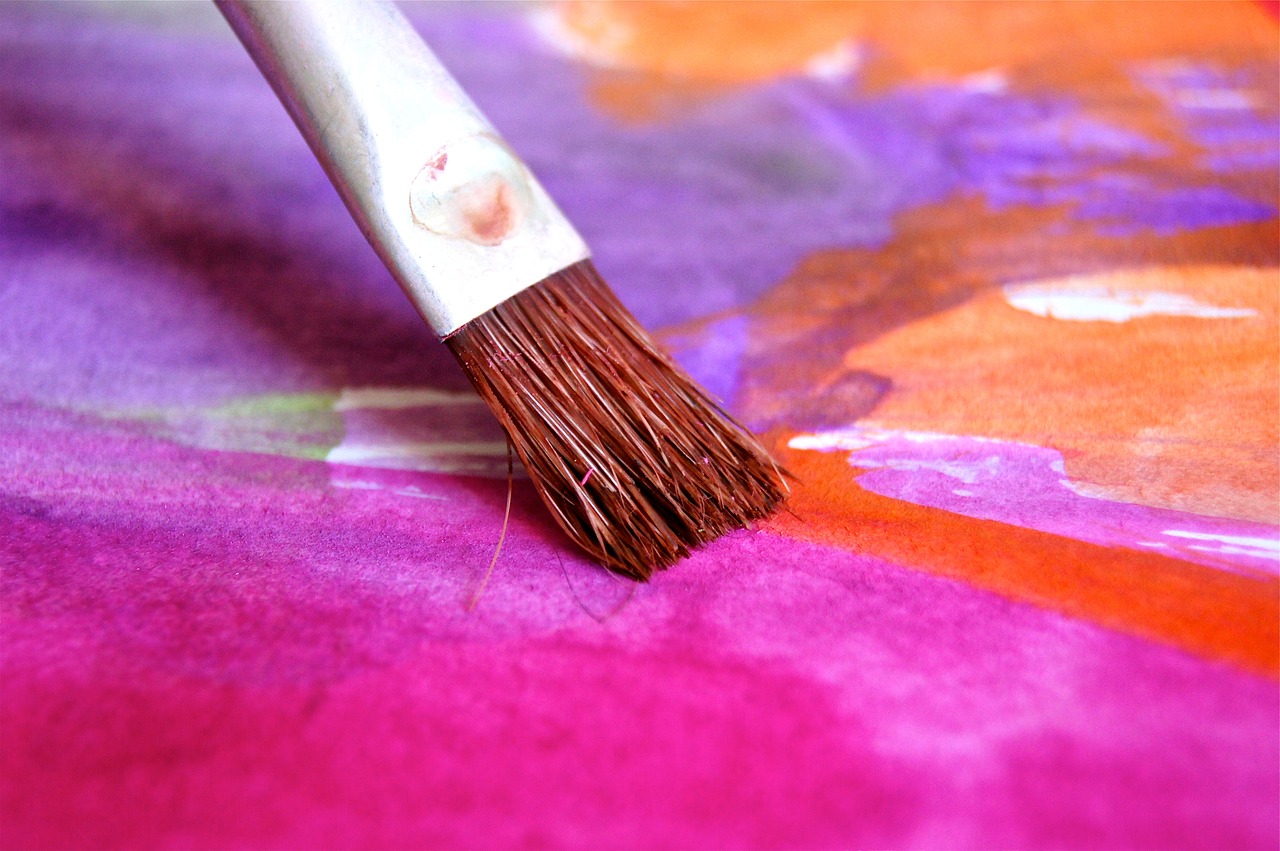
Cutting and Shaping Dishes
When it comes to creating stunning mosaic art, cutting and shaping your dishes is a crucial step that can make or break your project. Think of it like sculpting a block of marble; the way you cut your ceramic pieces can significantly influence the final design. First and foremost, safety is paramount. Always wear protective eyewear and gloves to shield yourself from any sharp edges or flying shards. You wouldn’t want a fun crafting session to end with a trip to the ER, right?
Now, let’s dive into the techniques for cutting your dishes. One of the most effective methods is using a tile nipper. This handy tool is perfect for snipping small pieces off your ceramics, allowing for more intricate designs. If you’re aiming for larger cuts, a glass cutter or a wet saw can be your best friends. A wet saw, in particular, is great for making clean cuts without creating too much dust—plus, it can handle thicker materials with ease.
But how do you actually break the dishes? It’s all about technique. Start by tapping the dish lightly with a hammer, focusing on the areas where you want to create the break. This is akin to cracking an egg; a gentle touch can yield the desired results without shattering the whole piece. Remember, practice makes perfect, so don’t hesitate to experiment with a few test pieces before diving into your main project.
Once you have your pieces cut, shaping them is the next step. This is where your artistic vision can truly come to life! You can use a sanding block or a file to smooth out any rough edges. This not only enhances the aesthetic appeal but also ensures that your mosaic is safe to handle. If you’re looking to create specific shapes, consider using a bench grinder for more precision.
For those who want to add a personal touch, you can even incorporate found objects or other materials into your mosaic. Think about using pieces of colored glass, stones, or even old jewelry to create a unique flair. The beauty of mosaic art lies in its diversity, so don’t shy away from mixing materials! Just remember to keep the overall design in mind as you cut and shape your pieces.
In summary, cutting and shaping your dishes is not just a technical process; it’s an opportunity to express yourself creatively. With the right tools and techniques, you can transform ordinary ceramics into extraordinary works of art. So grab your tools, put on your safety gear, and let your imagination run wild!
- What tools do I need to cut ceramic dishes? You will need a tile nipper, glass cutter, and possibly a wet saw for larger pieces.
- How can I ensure safety while cutting? Always wear protective eyewear and gloves to protect yourself from sharp edges.
- Can I use other materials in my mosaic? Absolutely! Incorporating found objects like glass, stones, or jewelry can add a unique touch to your artwork.
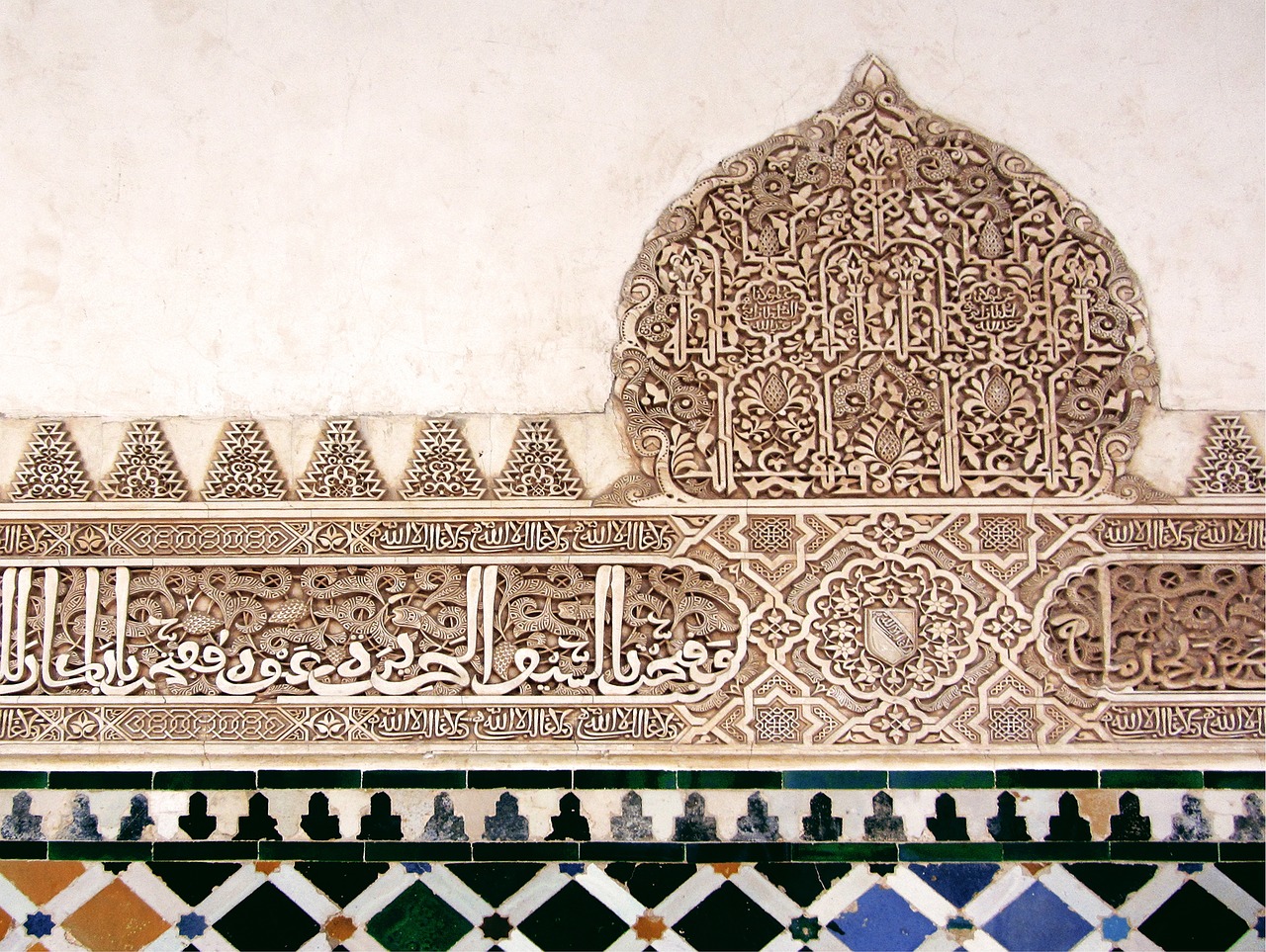
Designing Your Mosaic
Designing your mosaic is like painting a canvas, but instead of paint, you're using broken pieces of ceramic to create a stunning masterpiece. It's where your creativity truly shines and where you can express yourself in vibrant colors and unique patterns. So, how do you go about it? First, you need to brainstorm ideas that resonate with you. Think about themes that inspire you—maybe it's nature, geometric shapes, or even abstract art. The possibilities are endless!
Once you have a theme in mind, it's essential to create a cohesive design. This is where you can let your imagination run wild. Visualize how the different pieces will come together to form a harmonious whole. You might want to sketch your ideas on paper first. This not only helps in visualizing the final product but also serves as a guide when you start placing your ceramic pieces. Remember, a well-organized layout can save you a lot of time and frustration later on.
As you design, consider the color theory. Understanding how colors interact can elevate your mosaic from ordinary to extraordinary. For example, complementary colors (those opposite each other on the color wheel) can create a striking contrast, while analogous colors (those next to each other) can provide a more soothing, blended effect. When you're selecting your pieces, think about how the colors will work together. You want your mosaic to tell a story, and color plays a significant role in that narrative.
To help you visualize your design better, consider creating a template. A template serves as a roadmap for your mosaic project. You can sketch your design on a piece of paper or directly on the working surface. This way, you can plan the placement of each ceramic piece with precision. If you're feeling adventurous, you might even want to use a grid system to ensure that everything lines up perfectly. This method can be particularly useful if you're working on a larger piece.
Finally, don’t forget to take your time during the design process. Rushing can lead to mistakes that might compromise the overall look of your mosaic. Enjoy the journey of bringing your vision to life, and remember that every chip and crack tells a story. Each piece you choose adds character and charm to your artwork. So, grab your old dishes, unleash your creativity, and let the magic of mosaic art transform your discarded ceramics into something truly beautiful!
- What type of dishes are best for mosaic art? Generally, ceramic dishes work best due to their durability and variety of colors. However, glass and porcelain can also be used for added effects.
- Can I use adhesives for outdoor mosaics? Yes, but make sure to choose waterproof adhesives to withstand the elements.
- How do I cut the dishes safely? Use a tile cutter or a hammer and a cloth to break the dishes safely. Always wear safety goggles to protect your eyes.
- Is there a specific order to apply the pieces? While there’s no strict order, starting from the center and working outward can help maintain balance in your design.
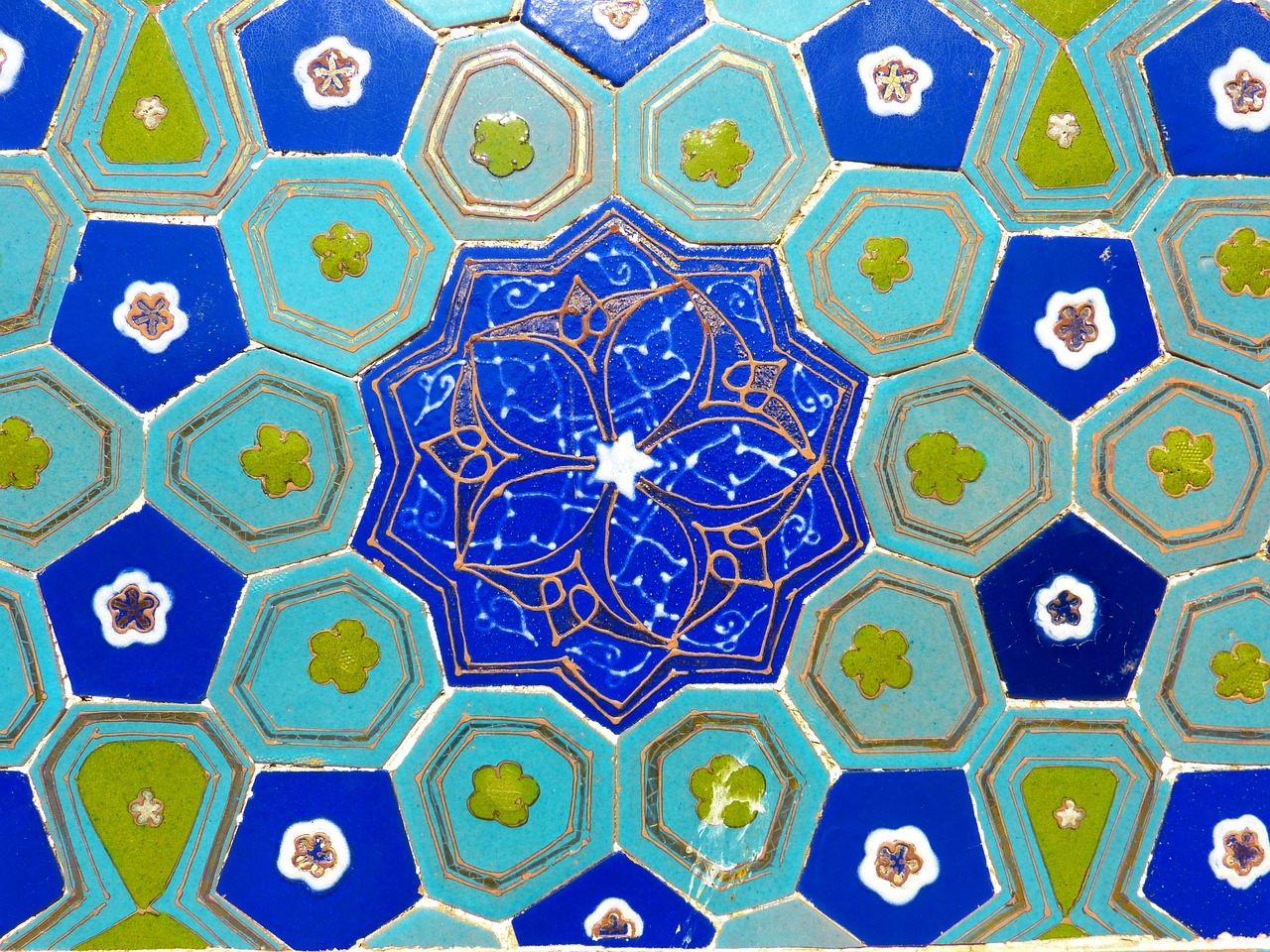
Color Theory in Mosaics
When it comes to creating stunning mosaic art, understanding color theory is like having a secret weapon in your artistic arsenal. Imagine walking into a room filled with vibrant colors that not only catch your eye but also evoke emotions and tell a story. That’s the power of color! By grasping the fundamentals of color theory, you can transform your mosaic from a simple craft project into a captivating masterpiece.
At its core, color theory revolves around the color wheel, which is a visual representation of colors arranged according to their chromatic relationship. The primary colors—red, blue, and yellow—are the building blocks of all other colors. From these, you can create secondary colors (green, orange, purple) by mixing two primary colors together. Furthermore, you can mix primary and secondary colors to create tertiary colors, expanding your palette even further.
One of the most exciting aspects of color theory is the concept of complementary colors. These are pairs of colors that, when placed next to each other, create a striking contrast. For instance, the combination of blue and orange or red and green can make your mosaic pop with energy. On the flip side, using analogous colors—colors that sit next to each other on the color wheel—can create a serene and harmonious look. Think of a sunset with shades of yellow, orange, and red; it’s pleasing to the eye and evokes a sense of calm.
To help you visualize how colors interact, consider this simple table:
| Color Type | Examples | Effect |
|---|---|---|
| Primary Colors | Red, Blue, Yellow | Foundation of all colors |
| Secondary Colors | Green, Orange, Purple | Created by mixing primary colors |
| Complementary Colors | Blue & Orange, Red & Green | Create vibrant contrast |
| Analogous Colors | Yellow, Yellow-Orange, Orange | Create harmony and unity |
As you design your mosaic, think about how you want your piece to feel. Do you want it to be energetic and lively? Go for bold complementary colors! Or perhaps you’re aiming for a tranquil vibe? In that case, stick with analogous colors. The emotional impact of your color choices can elevate your art to new heights, making your audience feel a connection to your work.
Another important aspect of color theory is understanding the temperature of colors. Colors are generally categorized as either warm (reds, oranges, yellows) or cool (blues, greens, purples). Warm colors tend to evoke feelings of warmth and excitement, while cool colors can create a sense of calm and relaxation. Mixing these temperatures can lead to dynamic compositions that draw the viewer's eye and keep them engaged.
In conclusion, mastering color theory can significantly enhance your mosaic art. By thoughtfully selecting your colors based on their relationships and emotional impacts, you can create pieces that not only look beautiful but also resonate deeply with those who experience them. So, grab those old dishes, unleash your creativity, and let the colors guide you on your artistic journey!
- What types of dishes are best for mosaic art? Look for ceramic dishes with interesting patterns and colors. Avoid overly fragile pieces.
- Can I use any type of adhesive for mosaics? No, it's important to choose the right adhesive based on whether your mosaic will be indoors or outdoors.
- How do I cut ceramic dishes safely? Use a tile cutter or a hammer and a cloth to break the dishes carefully. Always wear safety goggles!
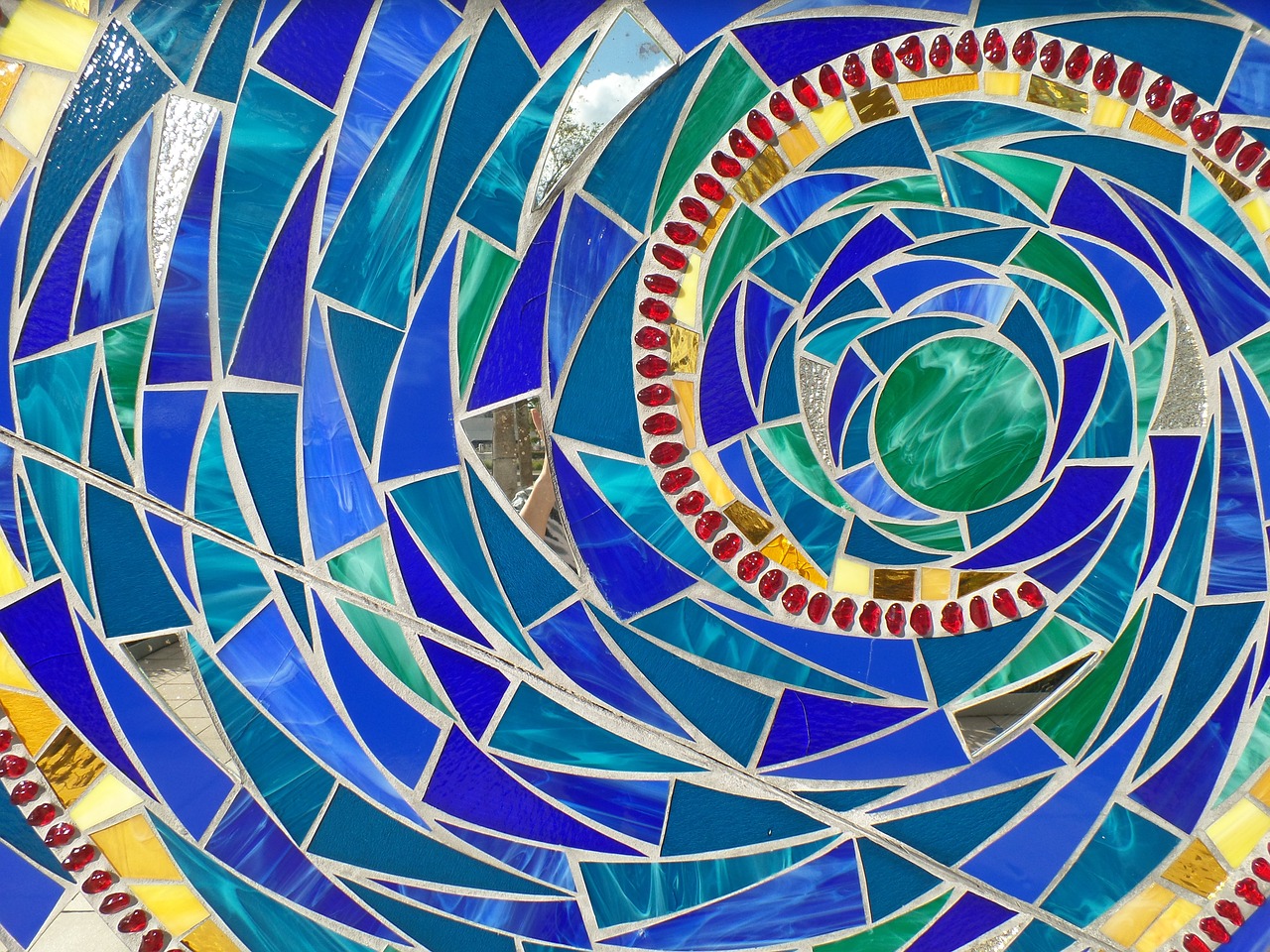
Creating a Template
Creating a template for your mosaic art is like laying the foundation for a house; it sets the stage for everything that follows. A well-planned template not only simplifies the mosaic process but also enhances the overall visual appeal of your artwork. Before you dive into the exciting world of cutting and gluing, take a moment to sketch out your design. This preliminary step can save you time and frustration later on.
Start by gathering your materials. You’ll need a piece of paper or cardboard, a pencil, and perhaps some colored markers or pencils to visualize your color scheme. Think of this template as your blueprint. It should reflect your artistic vision while also being practical enough to guide you through the process. As you sketch, consider the shapes and sizes of the ceramic pieces you plan to use. This will help you determine how to best fit them together, much like a jigsaw puzzle.
One effective method for creating your template is to draw your design to scale. This means that if your final mosaic will be, say, 2 feet by 3 feet, try to create a smaller version on paper that maintains the same proportions. This approach allows you to visualize how different pieces will interact without committing to cutting your dishes just yet. You might even find that certain shapes or colors look better together than you initially thought!
After sketching your design, it’s time to transfer it onto your working surface. This can be done using a few different methods:
- Tracing: If your template is on paper, you can place it beneath a piece of clear glass or plastic and trace the design directly onto your working surface.
- Graph Paper: Using graph paper can help you maintain proportions and spacing, especially if your design is geometric.
- Projection: For larger mosaics, consider using a projector to project your design onto the working surface, allowing for precise placement.
Once your template is in place, take a moment to review it. Does it reflect your vision? Are there any adjustments needed to improve the flow or balance of the design? This is the perfect time to make changes. Remember, the template is your guide, but it should also inspire creativity and flexibility.
Finally, as you begin to place your ceramic pieces, refer back to your template frequently. It’s easy to get caught up in the excitement of crafting, but keeping an eye on your original design will ensure that the final product aligns with your artistic intent. Just like a map guides a traveler, your template will guide you through the mosaic-making journey, helping you create a stunning piece of art that tells a story.
Q: What if I change my mind about the design while working?
A: It’s completely normal to have changes of heart! Feel free to adjust your template as you go along. Just remember to keep the overall vision in mind.
Q: How detailed should my template be?
A: The level of detail in your template depends on your comfort level and the complexity of your design. For intricate mosaics, more detail may be beneficial, while simpler designs can be sketched out more loosely.
Q: Can I use digital tools to create my template?
A: Absolutely! Digital design software or apps can be great for creating templates, especially if you want to experiment with colors and shapes easily.
Frequently Asked Questions
- What types of dishes are best for mosaic art?
When it comes to choosing dishes for your mosaic project, look for ceramics that have interesting colors and patterns. Plates, bowls, and cups made from stoneware or porcelain work well because they are durable and can be cut easily. Avoid dishes that are too thin or fragile, as they may break during the crafting process.
- What tools do I need to start my mosaic project?
Before diving into your mosaic art, gather essential tools such as a tile cutter or hammer for breaking dishes, adhesive suitable for ceramics, and safety gear like gloves and goggles. A sturdy baseboard for your mosaic and a grout for finishing touches will also be necessary to complete your artwork.
- How do I choose the right adhesive for my mosaic?
Selecting the right adhesive is crucial for ensuring your mosaic holds up over time. For indoor projects, a standard craft adhesive works well, but for outdoor mosaics, opt for waterproof adhesives to withstand the elements. Always check the manufacturer's instructions for the best results.
- Can I use non-waterproof adhesives for outdoor mosaics?
While you can technically use non-waterproof adhesives for outdoor mosaics, it’s not recommended. These adhesives may degrade over time due to moisture and temperature changes, leading to a shorter lifespan for your artwork. Always prioritize waterproof options for outdoor displays.
- What are some tips for applying adhesive correctly?
To ensure an even application of adhesive, use a small spatula or brush to spread it on the back of each piece. Avoid using too much adhesive, as it can ooze out and create a messy appearance. Take your time to position each piece carefully before the adhesive sets.
- What techniques can I use to cut and shape dishes?
When cutting dishes, safety is key! Use a tile cutter for clean cuts or wrap dishes in a cloth and carefully break them with a hammer for a more rustic look. Always wear safety goggles to protect your eyes from flying shards and work in a well-ventilated area.
- How do I create a cohesive design for my mosaic?
Start by brainstorming themes or color palettes that inspire you. Sketch out your design on paper, considering how the colors and shapes will interact. Once you have a layout you love, transfer it onto your working surface to guide the placement of your mosaic pieces.
- Why is color theory important in mosaic art?
Understanding color theory can significantly enhance your mosaic design. By knowing which colors complement each other, you can create visual harmony and make your artwork pop. Consider using a color wheel to help you choose colors that balance and contrast effectively.
- How do I create a template for my mosaic?
A well-planned template can simplify your crafting process. Start by sketching your design on paper, then transfer it to your baseboard using carbon paper or by lightly drawing it with a pencil. This way, you’ll have a clear guide for placing your mosaic pieces accurately.



















